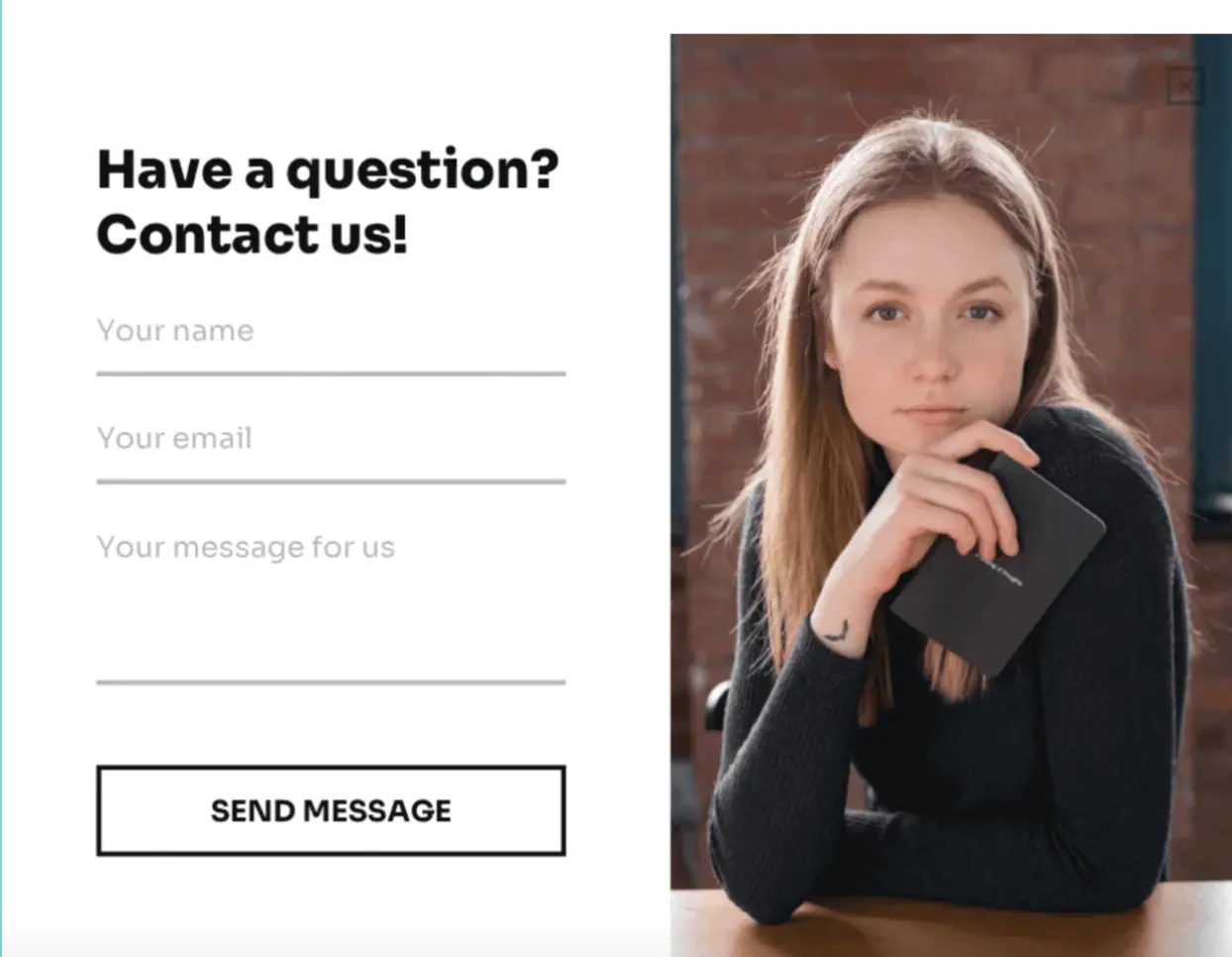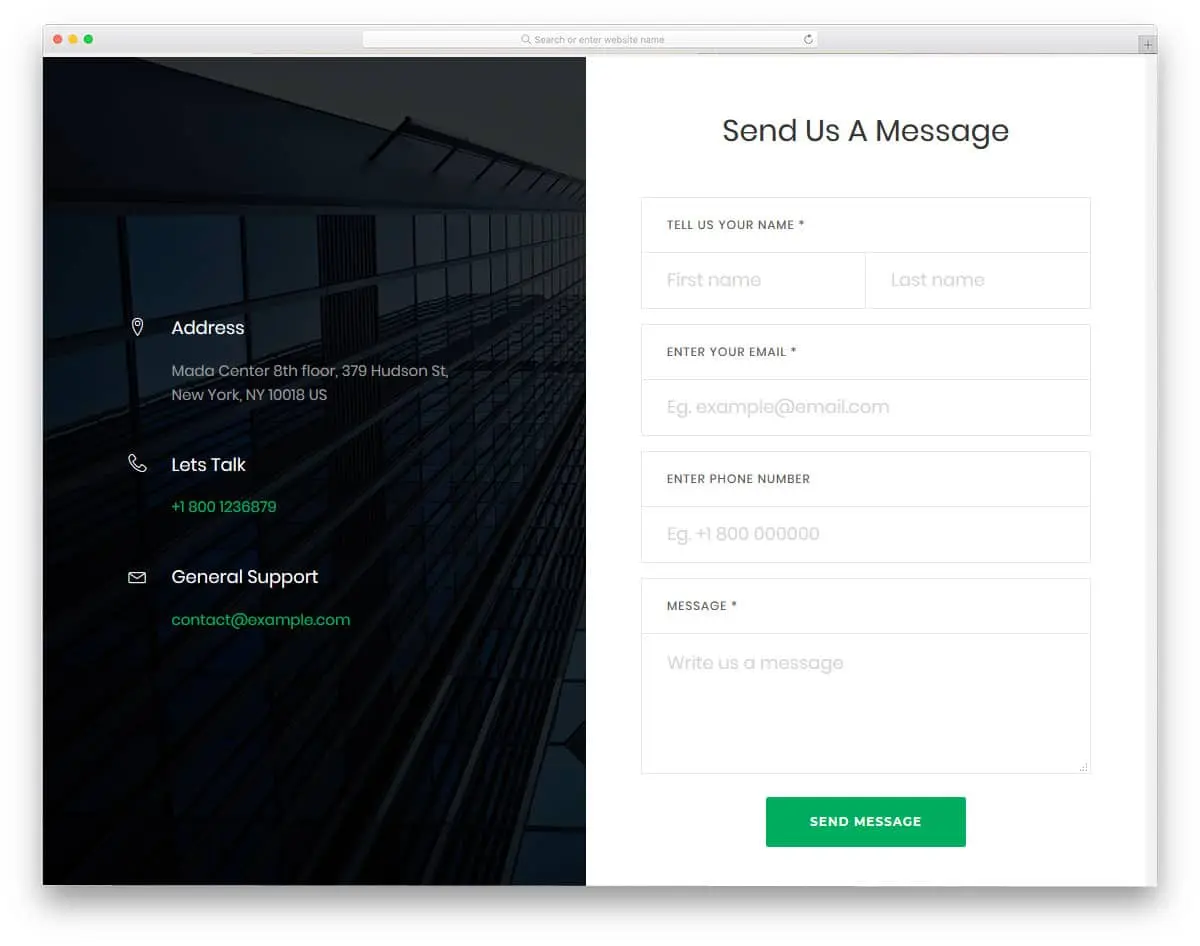A contact form is a web-based form you can find published on many websites. Any web visitor can fill out the form and submit it to send a message to the website owner.
Contact forms typically trigger email response messages to your inbox, allowing you to quickly receive notifications from web visitors without revealing your email address to hackers and spammers.
What Is A Contact Form?
A contact form is a user input form that enables web or app users to type messages for the website or app operator’s viewing. It’s also a web form that users can use to send messages to the individual or business that runs the website. Using contact forms is like sending emails, but you need to type your message on the website directly rather than using an email program.

How Does A Contact Form Work?
Let’s consider the primary processes involved during a web visitor’s interactions with contact forms. First, the website user fills out the form and clicks the submit button.
Clicking this button triggers the form field validation on the visitor side, where two things can happen. The data the visitor entered is validated successfully or fails the validation process.
Let’s assume the data fails the validation process; then the website displays the error to the web or app, appearing in red text below each field that failed validation, indicating the reason for failure.
The user needs to fix the error and resend the contact form. This time, the data is validated successfully.
After form field validation, the server then conducts the final validation check. If anything fails, the web user receives a message and needs to reenter the correct information.
Yet, if the validation process is successful, they can move on to the next steps. CAPTCHA validation to ensure the form user is human and not a computer also occurs at this stage as necessary.
While CAPTCHA is generally effective, it's important to stay informed about potential CAPTCHA cons to address any limitations associated with this crucial verification step.
The website sends an auto-response email to the visitor’s email address, usually through a no reply email. The visitor sees a ‘Thank You’ message, which has the dual purpose of hiding the contact form and appreciating the visitor's interest.
Features Of A Good Contact Form
Many things make a good contact form, including ease of use. It seems obvious, but it’s an often overlooked aspect of contact forms. Sometimes too much focus is put on the personal creative preferences of the web designer or business owner, rather than on the user.
While a contact form must meet your business needs, it must also be user-friendly. That means you should avoid jargon, and the presentation must be practical.
A stellar contact form also only asks for important information. You’ve probably come across a contact form asking you to provide personal information that you feel is unnecessary, such as your mobile phone number and home address.
That may alienate some web visitors, causing them to abandon your site and increase your churn rates. Instead, consider asking only for the information you really need from potential customers. Alternatively, you could include “optional” form fields that allow the user to decide how much information they wish to share.
Your contact form must have good functionality. Sounds obvious, right? However, how often have you completed a form only to realize it doesn’t work correctly? For example, there might be a bug that doesn’t accept your email address, or one field may ask for information you don’t have.
You must test your contact forms frequently to ensure they work correctly. You never know when something might change with your mailer server or hosting environment, stopping your forms from functioning correctly.

The Benefits Of Contact Forms
Publishing your email address on your site is a bad idea because spam bots regularly scrape email addresses from the web. If a spam bot gets your email address, it might end up on all types of spam mailing lists, causing severe security risks from phishing to fraudulent emails.
When you use contact forms, your business or personal email address is never displayed on your website, so scammers can't access it. However, contact forms can’t prevent all spam. You can still receive some via contact forms on your site, but it’s pretty easy to tweak your forms to avoid it. For instance, you can leverage CAPTCHA to ensure your web visitors are human.
Contact forms can also help you receive messages when it suits you. For example, most companies publish the phone number of their website together with their postal contact information.
But what happens when a potential customer tries to call when you aren’t there to respond? If you have no contact form on your site, perhaps they’ll leave and go to your competitor’s. That’s why your site must have a contact form and a phone number. Click here to learn more about adding a contact page on WordPress!


